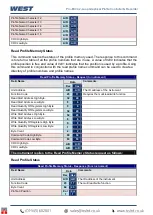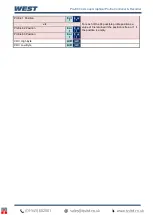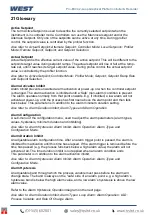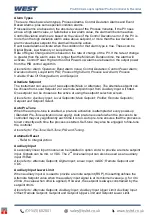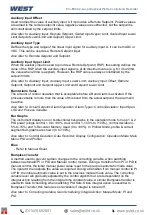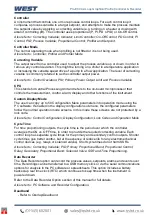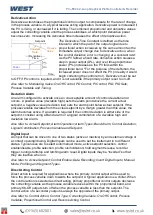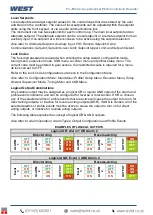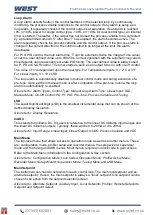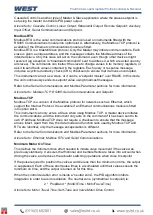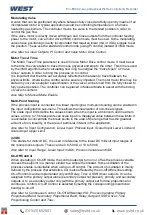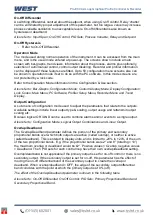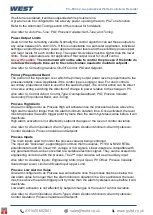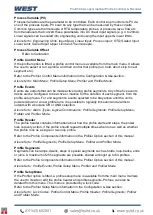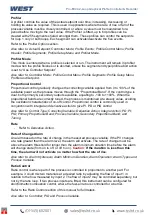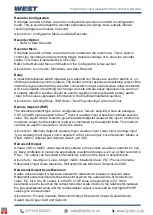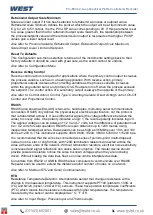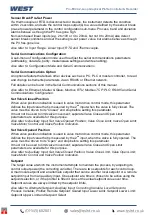
Pro-EC44 2-Loop Graphical Profile Controller & Recorder
Pro-EC44 Product Manual - 59540-2 September 2014
Page 215
Invert Digital Input
Digital inputs may b
e “inverted” so that they are active when off and inactive when on. This is
useful if the signal applied to the chosen digital input function is reversed in relation the
digital input action.
Also refer to: Digital Input.
Latching Output
Alarm outputs can be set to latch on when they become active. If enabled, an output will
remain latched ON even if the condition that caused it to be on is no-longer present and it
remains latched even if the unit is powered off-on. The output latch must be reset to turn it
off. The latch reset signal can be via a digital input or using the front keys in the clear latched
output screen. The alarm condition that caused the output to switch must have cleared
before the latch can be deactivated.
Also refer to: Alarm Types; Digital Input and Relay
LED
Light Emitting Diode. Four
LED’s are used as indicator lights (e.g. for the alarm indication,
automatic tuning stats, manual mode etc). Their function and labels can be changed with the
PC software.
Also refer to: Alarm Operation; Alarm Types; Automatic Tuning; Manual Mode and PC
Software.
Linear Input
A mVDC, mADC or voltage signal usually used to represent the value of the process variable
for one of the PID control loops. This can be any variable that can be converted into a
suitable DC linear signal. Common examples are Humidity, pressure, pH or temperature.
One or optionally two main inputs are available, and an auxiliary linear input can also be
installed to provide a remote setpoint source.
Also refer to: Auxiliary Input; Input Range; Linear Output; mVDC; mADC; PID; Process
Variable; Remote Setpoint and VDC.
Linear Output
A mVDC, mADC or voltage signal used to provide a continuous proportional control output or
to retransmit the process or setpoint values to an external device.
Also refer to: Continuous Control; Linear Input mVDC; mADC; Process Variable; Proportional
Control; Retransmit Output; Setpoint and VDC
Limit Controller
A process protection device that can shut down a process at a pre-set
“exceed condition”.
Limit controllers work independently of the normal process controller in order to prevent
possible damage to equipment or products. A fail-safe latching relay is fitted, which cannot
be reset by the operator until the process has returned to a safe condition. Limit controllers
are especially recommended for any process that could potentially become hazardous under
fault conditions. Ensure you choose a limit controller with the correct approvals for local
regulations (e.g EN 14597 etc) if it is to be used as a safety limiter.
Also refer to: Controller and Latching Relay.
Summary of Contents for Pro-EC44
Page 1: ...Pro EC44 2 Loop Graphical Profile Controller Recorder Pro EC44 User Guide 59540 2 ...
Page 2: ......
Page 6: ......


